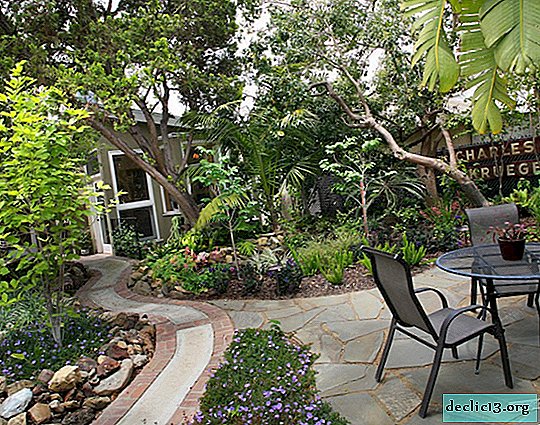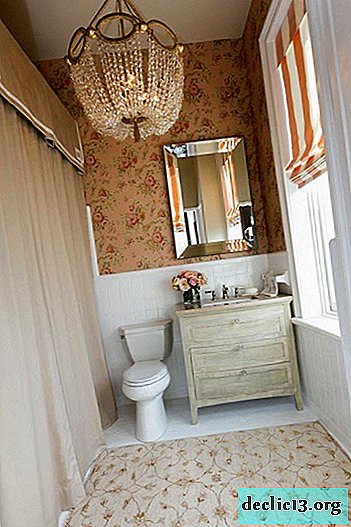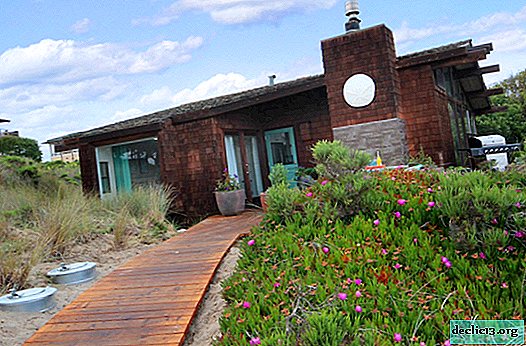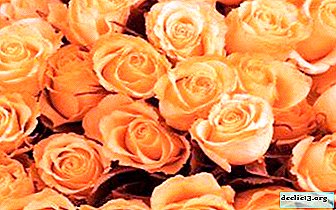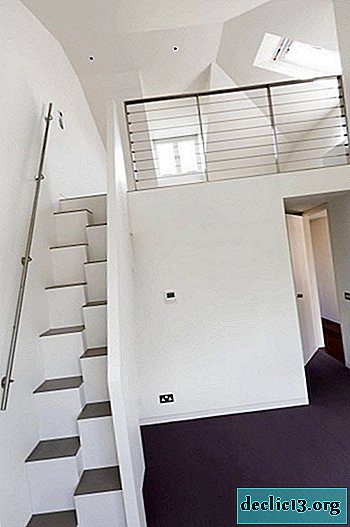Unique Black Velvet Geranium: an unusual decoration for the windowsill
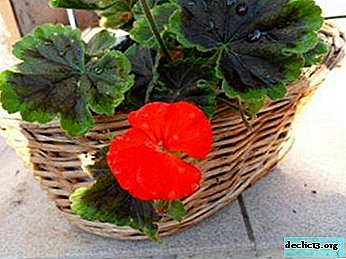
There are several hundred species of geranium. This flower impresses with a variety of shades of flowers and the shape of the leaves. In addition, there are both tall (over 50 cm) and undersized bushes.
In this article, we will talk about a special variety variety F1 - "Black Velvet", which differs, as the name implies, in a special color of leaves.
How to grow this hybrid, what are its features? You will learn about all this in detail in our article. Also watch useful video.
Botanical Description and History
This kind of geranium belongs to the type of multiflera, i.e. blooms compactly, abundantly, grows to a small height. The flower got its name because of the bright chocolate leaves, which in the first year, however, have only a slightly bronze hue.
On a note. Bred this fundamentally new type of geranium in America, where breeders received the prize of the American Society of Breeders.What does Black Velvet look like?
Among the variety of geraniums, only "Black Velvet" has established itself as having chocolate leaves. All other varieties are fundamentally different from it. The height of this type of geranium reaches 25-30 cm, the leaves of the plant are dark brown in the center, and green at the edges, the flowers themselves are small in size, pink in color, sometimes salmon, light pink, and sometimes even bright red.
Photo
In the photo, this variety of black geranium is presented in all its glory.




Where and how to plant?
This type of geranium is planted from January to April. It all starts with planting seeds in the room. This can be done in January-February. If you use layering, then it will bloom less densely.
The soil mixture should easily pass water, have Ph 6.0 and be loose to the touch. You can cook it yourself from peat, turf land, river sand in a ratio of 2: 1: 1, or you can buy a finished one in a store, for example, Exo.
- To plant the seeds, grooves of not great depth are laid, which, after uniform laying, slightly sprinkle. In no case should excessive moisture be allowed in the soil. Otherwise, the roots of the "newborn" plants can simply rot.
- To maintain optimal humidity conditions, crops should be covered with film or glass, and then placed in a bright, but not hot place with a maximum temperature of 24 degrees.
- As soon as the cotyledons appear, the glass or film needs to be removed, the crops - rearranged in a more lighted place, and the temperature lowered to 18 degrees. If the seedlings lack light, they will quickly stretch out and then simply die.
- The next stage is the appearance of two full leaflets. Then there is a dive into pots with a maximum diameter of 10 cm. If your plant is extended, then the problem can be fixed by deepening the planting spot by 2 cm.
- After 2 weeks, fertilizing with liquid organic fertilizers begins.
- And after the onset of May, in its second half, the plant is planted on the ground.
What conditions should be there, read below. If your planting zone is not a flower bed, but a balcony or a porch, then you can plant geranium there in early May.
Important! If you want a flower to successfully winter, he definitely needs a winter shelter.It is not necessary to remove snow from the soil. He "wraps" the plant, not allowing heat to escape.
Lighting and location
 The plant, although it can live in partial shade, but still prefers the sun more. And this distinguishes "Black Velvet" from all other varieties of geraniums.
The plant, although it can live in partial shade, but still prefers the sun more. And this distinguishes "Black Velvet" from all other varieties of geraniums.
True, the sun for the whole day should not constantly shine on the plant in direct rays.
From this it follows that it must be planted either under a large sprawling tree, through the foliage of which the sun will break through the first half of the day, or on a flowerbed under the more “tall neighbors” that will cover the flower in the afternoon.
Soil requirements
Recommended landing pattern: 15X15 or 20X20. Plant a plant to a depth of 2-3 cm more than when planting seeds.
In terms of soil, "Black Velvet" is unpretentious. Any kind of land is suitable for him. However, you need to monitor the watering and dryness of the landing site.
In addition, river sand (coarse) should be added at the end of the season to improve the permeability of the earth. Flower treats mineral fertilizers positively, therefore, if you wish, you can fertilize the soil, at least once a season.
How to care?
Closely monitor the temperature, and do not forget to regularly water the geranium. Recommended temperature for growth: from 10 to 15 degrees during the day and at least 5 degrees at night if winter crops were planted, 20 degrees during the day and 16 degrees at night if planted in spring.
Common Diseases and Pests
Pests that can damage the plant:
- Nematodes. The most dangerous parasites against which there is no cure. If they hit Black Velvet, all that remains is to dig it out and destroy it, as well as the earth.
- Spider mite.
- Aphid.
- Whitefly
The last three species are destroyed by washing the flower and treating with insecticides.
Types of disease that can harm geraniums:
- Leaf rust due to fungal infection. It appears in the form of rusty yellow spots.
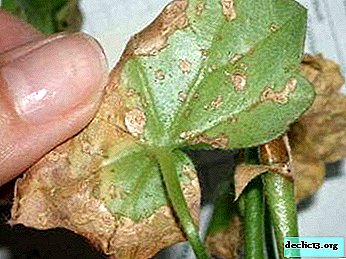 Mushroom Botrytis. Because of it, dead spots in the form of concentric circles may appear on the sheet. If the plant is not treated, then the leaves may begin to fall, and then decay follows.
Mushroom Botrytis. Because of it, dead spots in the form of concentric circles may appear on the sheet. If the plant is not treated, then the leaves may begin to fall, and then decay follows.- Viral infections. Symptoms can be very different: from grooves on the stem of a purple hue, to stunting.
- Edema. Because of it, chlorine spots occur. As a result, the foliage turns yellow and falls.
In fact, all diseases can be prevented by good prevention, i.e. prevent excessive soil moisture, water on time, monitor the temperature and periodically inspect plants for stains.
Propagation Features
The following breeding methods for Black Velvet are available:
- Cuttings of the stem parts of the plant and tops. The shoots are cut off at the top so that after cutting there remains at least another 2-3 healthy leaflets. Planted cuttings to a depth of 2-3 cm at a temperature of 15 degrees. The first 4 days it needs to be kept in the dark, then put on the window but so that there is a shading. It is desirable to perform the procedure in the spring.
- Reproduction using seeds. Not such a common method of breeding "Black Velvet". After collecting seeds from your plant, they need to be wiped with sandpaper to facilitate germination. The soil should be sieved and light. And after sowing, the landing must be covered and put in a dark place.
- Division of the roots. This method is only available if processes have started on the root of geranium. Then the bush is dug up, and these processes are cut off. The soil for planting should be used ordinary, and the bowl should have a diameter of not more than 10 cm.
Conclusion
As we saw, “Black Velvet” is a unique kind of geranium in its color of leaves, which, however, differs little from the “original” in everything else.

 Mushroom Botrytis. Because of it, dead spots in the form of concentric circles may appear on the sheet. If the plant is not treated, then the leaves may begin to fall, and then decay follows.
Mushroom Botrytis. Because of it, dead spots in the form of concentric circles may appear on the sheet. If the plant is not treated, then the leaves may begin to fall, and then decay follows.
